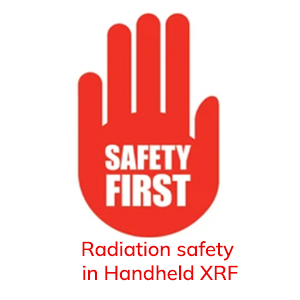X-ray Fluorescence (XRF) spectrometry is an increasingly popular analytical technique for qualitative and quantitative analyses of materials. Based on the principle that when exposed to high energy X-rays, materials emit secondary X-rays at characteristic wavelengths which allows identification and quantification of elements present within samples. As this non-destructive process provides useful results across industries including mining, environmental science, pharmaceuticals, archaeology etc.
In this article, we will delve into the fundamentals of XRF analysis, from its principles and instrumentation to applications and give readers a complete picture of this powerful analytical technique.
Basic Principles of XRF X-ray fluorescence spectrometry operates on the principle that excited atoms will release characteristic X-rays when exposed to high energy X-rays. When exposed, materials absorb their energy through photoelectric absorption, which results in inner shell electron ejection from these excited atoms and causes them to go into an excited state that causes Auger electron emission which releases this energy as characteristic X-rays.
These distinctive X-rays emit specific energy levels for each element present in a sample, giving an indication of its elemental composition by measuring energy and intensity of emitted X-rays emitted by an XRF device. By taking measurements on these emitted X-rays, an XRF analyzer can provide data regarding elemental composition within samples as well as identification and quantification of any present elements; making XRF an invaluable asset when applied to materials analysis.
Instrumentation of XRF
XRF spectrometry requires special instruments that generate and detect X-rays as well as interpret their emitted from samples. An XRF spectrometer contains four main components – an X-ray source, sample chamber, detector system and data processing system – among them is its signature element: the data processing system.
An XRF spectrometer typically utilizes an X-ray tube which emits high-energy X-rays that are directed at a sample, prompting its atoms to emit characteristic X-rays as a response. A sample chamber holds it securely during analysis while providing precise positioning and alignment with both source and detector.
The X-ray detector is used to assess the energy and intensity of emitted X-rays from samples, with various types such as solid-state detectors and gas-filled proportional counters being utilized for this process. Such detectors allow accurate measurement of energy levels emitted X-rays from the sample, which allows identification of elements present.
An XRF spectrometer’s data processing system is essential in the quantitative analysis and interpretation of measured X-ray data, providing invaluable information about sample elemental composition. This includes software for data acquisition, processing, presentation as well as databases to compare measured spectra with known standards. Furthermore, data processing systems also allow for easy database queries comparing measured spectra with known elemental standards, giving valuable insight into their elements composition.
Applications of XRF
X-ray fluorescence spectrometry has many applications across numerous industries due to its non-destructive nature and ability to provide rapid and accurate analysis of materials. Some key applications of XRF include:
Mining and Exploration: XRF technology is widely utilized by mining industries for the analysis of ore, minerals, and geochemical samples. XRF provides invaluable information regarding elemental composition of samples collected to facilitate exploration and extraction of valuable minerals or metals from them.
– Environmental Science: XRF analysis can be used to monitor and assess pollution in soil, water and air samples by providing vital information about heavy metals or pollutants present. It provides valuable insights into environmental conditions as a whole.
Pharmaceuticals: XRF analysis is utilized extensively within the pharmaceutical industry for analysis of raw materials, drug formulations, and quality control purposes. It offers quick and accurate elemental analysis of pharmaceutical samples to ensure safety and efficacy of medication.
Archaeology and Cultural Heritage: XRF can be used for the analysis of archaeological artifacts, cultural heritage objects and artworks to identify materials used for their construction as well as assess conservation needs and preservation requirements.
– Industrial Quality Control: XRF technology is widely utilized for use in industrial manufacturing and quality control for analyzing materials such as metals, alloys, plastics and ceramics. It provides rapid and accurate elemental analyses of these materials which ensure their quality as well as compliance with regulatory standards.
Conclusion X-ray fluorescence spectrometry (XRF) is an advanced analytical technique that has transformed materials analysis. By employing the principles of x-ray emission from atoms within samples, XRF provides rapid and accurate elemental analyses across numerous industries – making it an indispensable analytical technique for researchers, scientists, and industry professionals alike.
